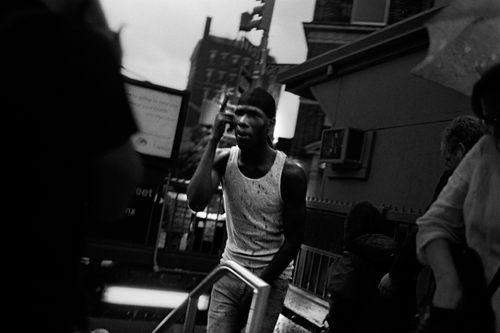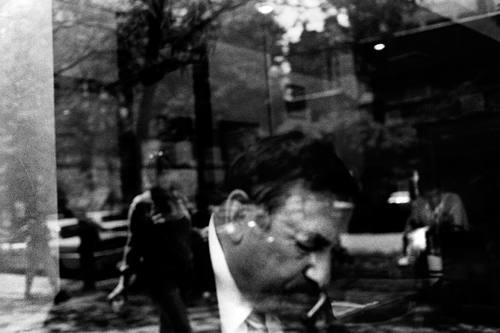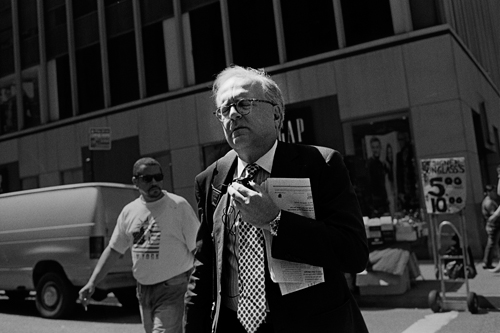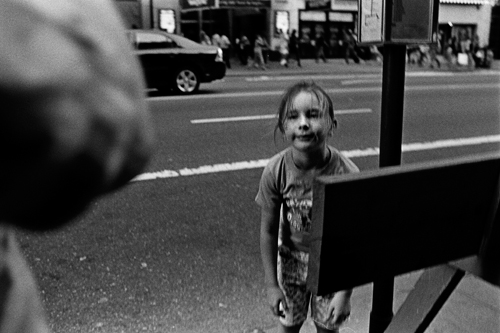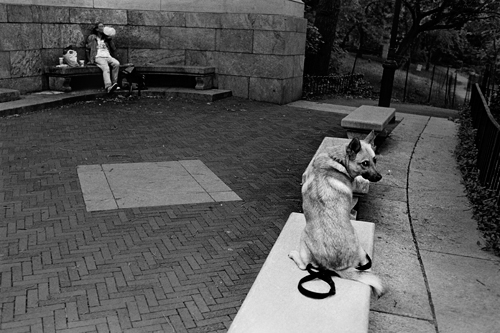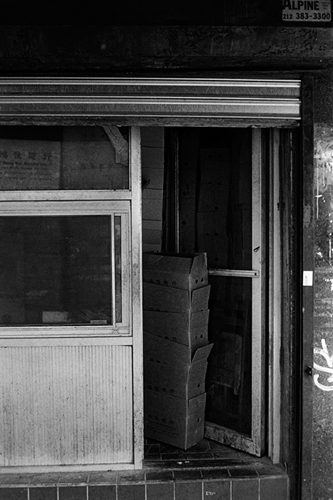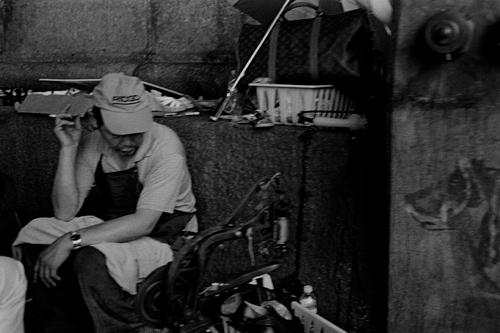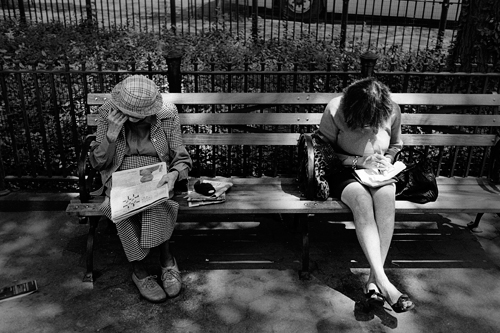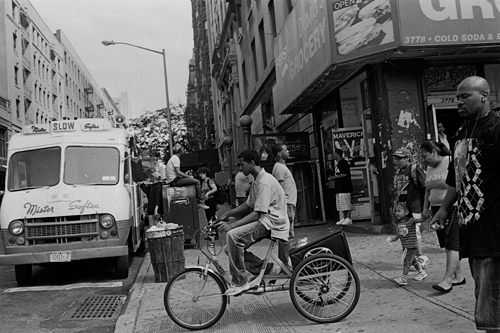As a follow up to the recent post on the inventors of fashion photography (here), I thought it would be best to give proper props to the two guys I view as the inventors of modern fashion photography as we know it, Guy Bourdin (pronounced Gee) and Helmut Newton.
(You may ask, but what about Avedon and Penn, especially given my proclivity of admiration for their works? My response would be that I consider them more the fathers of modern portraiture, not fashion; Avedon is a portrait photographer first and foremost…certainly up for discussion though.)
If you know fashion, then I don’t need to belabor the influence these guys had and have on it. I will say that I’ve always been a fan of Newton’s aesthetic. His works from day one appealed to my personal taste and a interest in black and white; both things I think would be obvious if you looked at my portfolio. He was a phenomenal photographer and opened up a lot of doors. But Bourdin, well, Bourdin is often referred to in casual conversation as a genius, and though I’m hesitant to use that term lightly, I wouldn’t disagree in this case. I prefer Newtons look, sure, but I think Bourdin did more as an artist in the purest sense of the word. His work is incredibly refined, has an incredible dedication to a vision, and seems like something he HAD to do. Maybe, I’d sum it up like this: I imagine Newton probably had fun with his work, and probably could have had fun doing a lot of other things in life; while, Bourdin, I imagine, on some levels, was haunted by his work, but he was meant to do it – there was no other route for him.
But this is all speculation, imagined scenarios and personalities; really, I’ve no idea about either of them beyond what I gather from reviewing the photographs and from the little I’ve read about them.
Guy Bourdin:

photo: © Guy Bourdin
Helmut Newton:

photo: © Helmut Newton
I’m not prone to superstition, but for some reason the shutter on my F3hp was hanging up all day so half my shots were ruined, grossly overexposed on the right of the frame. It worked fine the day before and it worked fine the day following. Ghosts, jinxes, or the gawds being rude on this ominous date, I don’t know but odd regardless.

photo: ©Graeme Mitchell, 2008

photo: ©Graeme Mitchell, 2008

photo: ©Graeme Mitchell, 2008

photo: ©Graeme Mitchell, 2008

photo: ©Graeme Mitchell, 2008

photo: ©Graeme Mitchell, 2008

photo: ©Graeme Mitchell, 2008

photo: ©Graeme Mitchell, 2008

photo: ©Graeme Mitchell, 2008

photo: ©Graeme Mitchell, 2008

photo: ©Graeme Mitchell, 2008

photo: ©Graeme Mitchell, 2008
It is mostly a desire, an attraction, something that has-to-be-had, and not logical at all – not initially at least - no, rather, gut level, very fundamental…not any different than say sexual attraction or moral conviction. Though, it’s more muddled than that, less intact if you will. B/c the process is something that is at times fought for with great stress, but at other times something that wells up uncontrollably and spills-over. So it is a balance of opposites. If the moment was a man, he’d be deeply meditative while shuddering with a mania, he’d be both courageous and meek, loving and loathing…all the while brimming with a deep conviction that what is happening is necessary. Not in a sanctimonious way, not at all, but most certainly in a stubborn way.
These are the guys that invented fashion photography; pre-WWII consciously or not they created a whole new genre and became the shoulders Avedon and Penn and the rest would later stand on. Absolutely remarkable. If you don’t know them, study up, b/c they’ve a great deal to teach.
Horst P. Horst:

photo: Mainbocher Corset, Paris, 1939. ©Horst P. Horst.
Cecil Beaton:

photo: Baba Beaton: A Symphony in Silver, 1925. ©Cecil Beaton Archive.
George Hoyningen-Huene:

photo: Divers, 1930. © George Hoyningen-Huene.
Louise Dahl-Wolfe:

photo: Twins at Beach, 1955. © Louise Dahl-Wolfe.
Martin Munkacsi:

photo: Lovely autumn: the last rays of sunshine, ca. 1929. © Joan Munkacsi.
This is a recording of William Faulkner’s Nobel Prize acceptance speech, as prevalent today as it was when he originally read it I believe.
[audio:williamfaulknernobelprize.mp3]
audio: William Faulkner’s Nobel Prize acceptance speech. Delivered, Dec 10, 1950 in Stockholm Sweden

photo: William Faulkner, Hollywood, CA, 1942. ©Alfred Eriss/Pix Inc./Time Life Pictures/Getty Images
If you drive fast straight east from Portland for approximately 3 hours you’ll pass within about 9 miles of this place. It’s the kind of place that conjures absolutely nothing in the imagination. It’s a desert of sorts.
“Human existence being an hallucination containing in itself the secondary hallucination of day and night (the latter an insanitary condition of the atmosphere due to accretions of black air) it ill becomes any man of sense to be concerned at the illusory approach of the supreme hallucination known as death. -DE SELBY”
Epigraph from The Third Policeman by Flann O’Brien.

photo: Umatilla, OR. © Graeme Mitchell 2008

photo: A Road to a Prison, Umatilla, OR. © Graeme Mitchell 2008
B/c it is seems to fit the pattern of how everything is here right now: palpable disconnect. It’s terrible in many ways…maddening actually. When I watch people on the street, on the subway, sitting on the park benches, driving their cars, living life, following the traced lines that seem to have been set out long before them, when I watch this it makes no sense; they’re all unfinished; they’re fragmented outlines that were never put in order. It’s as though a fog has settled over that which is usually inferred, that which is usually taken for granted. I don’t know when one plus one didn’t equal two anymore, but I’m not confident it does. It’s like we’re on a deep superlative bender, but without the feeling good, just the psychological tremors and quakes and underpinnings of disaster…this could be a matter of projecting…but I don’t think so. I’m not getting this across very clearly, am I? But, listen, it’s has me worried. Even these simple little pictures, this record of someday what was, seem to have become slippery, so to speak, as if they’re without reason. My only reaction is resistance, a push to take them out to some other limit. B/c sometimes they’re all I can hold onto. The continued study of a ____, at whichever end of the spectrum it exists. You’d think it would exist at some end, right? That it’s a sort of maximum. Doesn’t strike me as something that would be subtle.
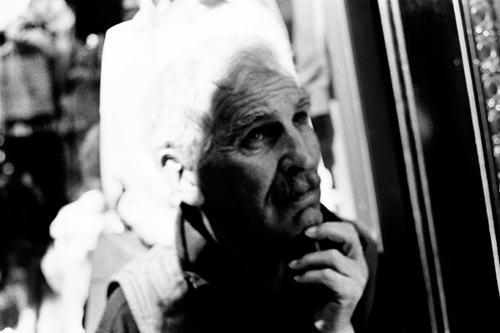
photo: © Graeme Mitchell 2008

photo: © Graeme Mitchell 2008
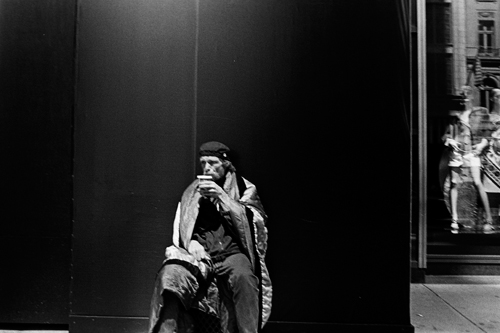
photo: © Graeme Mitchell 2008
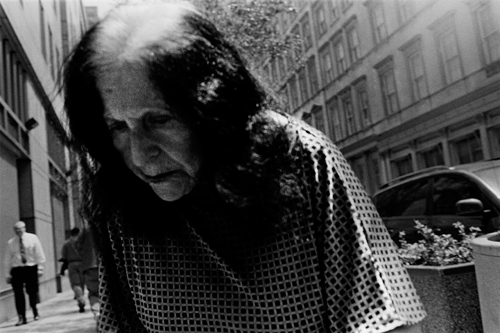
photo: © Graeme Mitchell 2008

photo: © Graeme Mitchell 2008

photo: © Graeme Mitchell 2008

photo: © Graeme Mitchell 2008
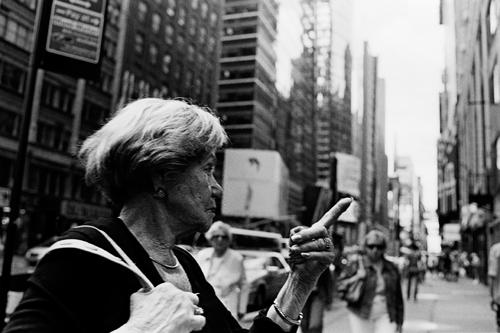
photo: © Graeme Mitchell 2008
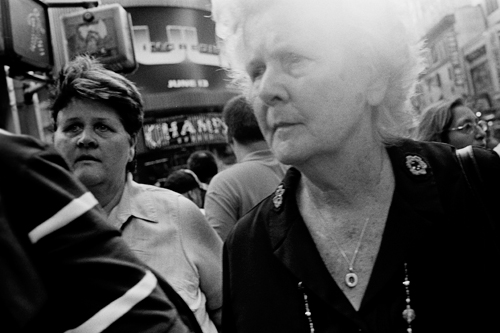
photo: © Graeme Mitchell 2008

photo: © Graeme Mitchell 2008

photo: © Graeme Mitchell 2008
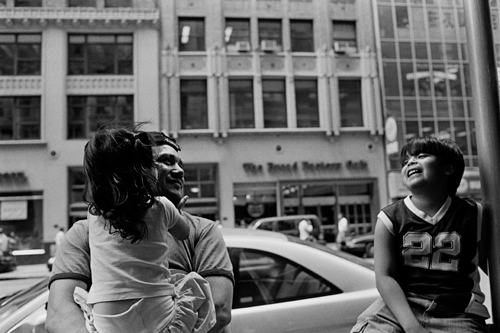
photo: © Graeme Mitchell 2008
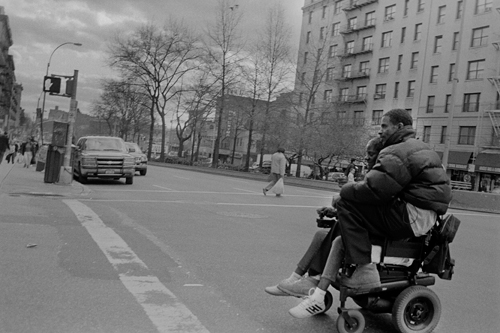
photo: © Graeme Mitchell 2008
Finally time to get back on those grit-dusted-streets, back to itchin’ that itch, back to not backing off.
Shoot the lights out, as my good friend Garett suggests.
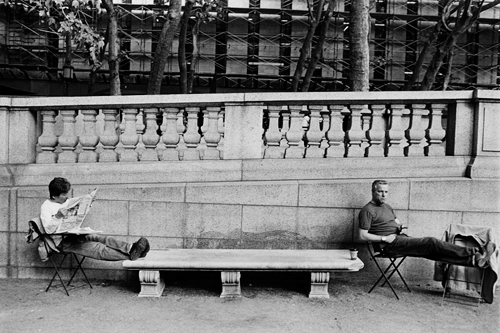
photo: © Graeme Mitchell 2008
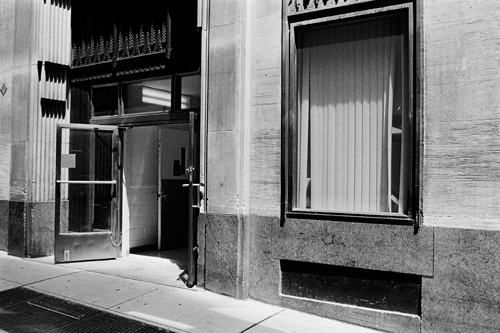
photo: © Graeme Mitchell 2008
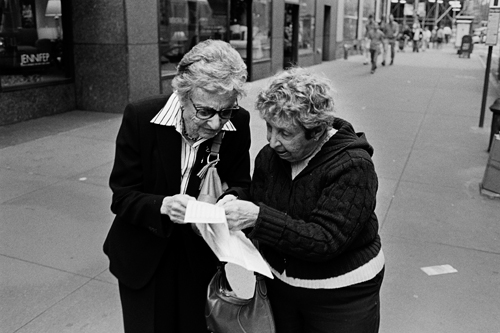
photo: © Graeme Mitchell 2008
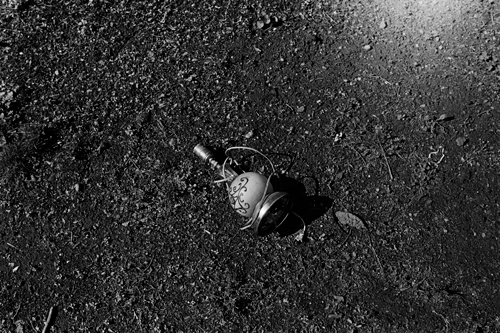
photo: © Graeme Mitchell 2008

photo: © Graeme Mitchell 2008

photo: © Graeme Mitchell 2008

photo: © Graeme Mitchell 2008

photo: © Graeme Mitchell 2008
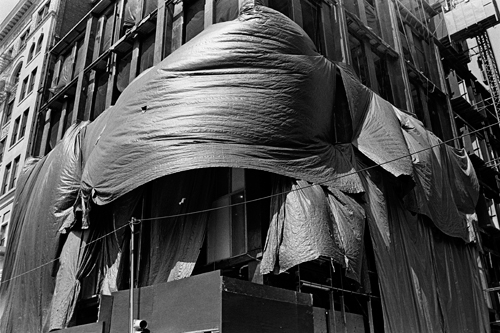
photo: © Graeme Mitchell 2008
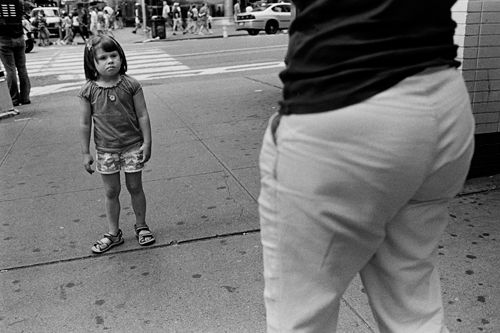
photo: © Graeme Mitchell 2008

photo: © Graeme Mitchell 2008

photo: © Graeme Mitchell 2008

photo: © Graeme Mitchell 2008
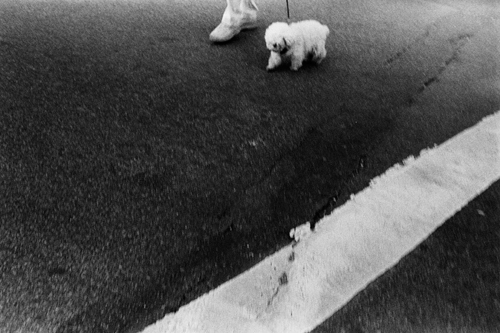
photo: © Graeme Mitchell 2008
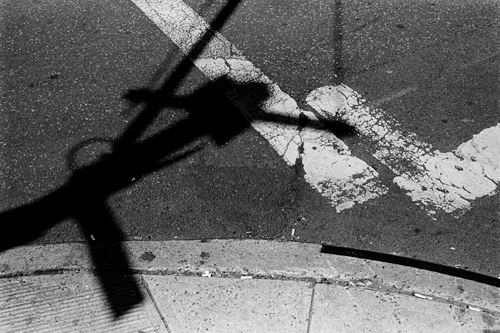
photo: © Graeme Mitchell 2008
I’m sure many of you have heard, but I thought it worth mentioning here that Yves Saint Laurent died. He was considered one of the greatest designers of the 20th century, not only b/c of his clothes, but also for his use of Fashion (with a capital F) as a vehicle of transformation of womens’ function in society. He was at the forefront of inventing the modern women in mass culture.
A Visual Society has a nice little summary of some of his ad imagery here, one of which being Helmut Newtons’ deservedly famous take on Yves’ tuxedo suit:
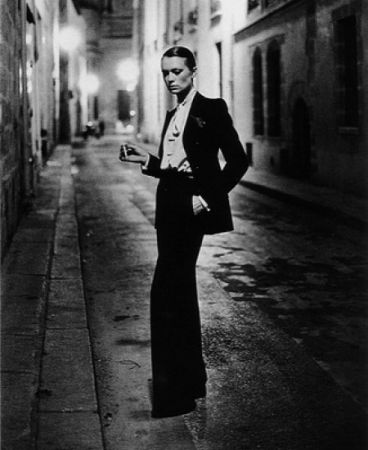
photo: Le smoking, ©Helmut Newton.



